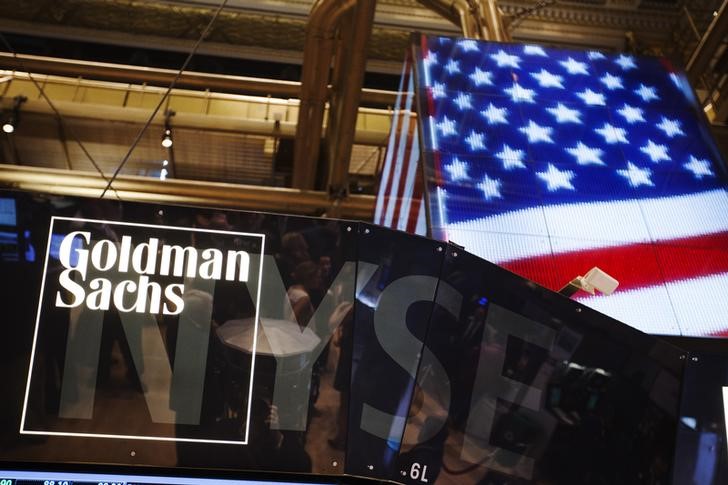Small U.S. banks and businesses make for big problem: McGeever

.
GS
+0.88%
Add to/Remove from Watchlist
Add to Watchlist
Add Position
Position added successfully to:
+ Add another position
Close
By Jamie McGeever
ORLANDO, Florida (Reuters) -If small businesses are the bedrock of the U.S. economy, last month’s banking shock has given us a pretty good idea of where the epicenter of any looming recession will be.
Deposits have fled small banks at a record pace, the availability of credit for small businesses is deteriorating rapidly, and these firms are increasingly reluctant to hire workers or expand.
The U.S. banking sector has been in a state of constant, if slow, consolidation over the decades and the total number of banks has roughly halved over the past 25 years. Amazingly though, there are still over 4,000 scattered across the country, all but a few dozen of them considered ‘small’ or ‘medium-sized’.
The relationship between these thousands of banks and millions of small businesses runs deep, and is critical to the health of the economy at large. If one half of the relationship is in trouble, so is the other.
And so is wider GDP, when you bear in mind that small businesses account for around 40% of all jobs.
The recent bank stress will hit lending. Small banks will probably tighten credit standards further, limiting a key source of funding for small businesses – many of which are riskier borrowers and key customers for these banks.
It has the potential to become a vicious circle.
The March survey of small businesses by the National Federation of Independent Business on Tuesday certainly painted a disturbing picture, with underlying details more concerning than the modest decline in the headline confidence index.
The net percentage of firms saying now is a “good time to expand” fell to just 2%. That’s the lowest since March 2009 and the second lowest since the survey began, eclipsed only by April 1980, according to Joe Lavorgna at SMBC Nikko Securities.
The share of firms planning to increase hiring fell to 15%, the lowest in six years, excluding the pandemic, while credit conditions measured by the ‘Loan Availability Compared to Three Months Ago index’ deteriorated sharply to the worst in over a decade.
Lavorgna reckons the warning signs could not be clearer – recession and a “pronounced credit crunch” are coming, and the only unknown being their severity.
“Unfortunately, there has been little in either word or action that suggests the Fed understands the gravity of the situation,” Lavorgna wrote on Tuesday.
ALL BUSINESS IS LOCAL
Fed officials have been at pains to separate the provision of liquidity and credit to financial institutions in the wake of the banking shock from its 475 basis points of rate hikes over the past 13 months to bring down inflation.
New York Fed President John Williams said this week he has yet to see “clear signs” of credit conditions tightening, and if it does happen Fed officials don’t know how bad it could be.
A report from Goldman Sachs (NYSE:GS) published on Monday lays out the strength and importance of the deep-rooted ties between small businesses and banks in the United States today.
Small businesses with fewer than 100 employees employ 35% of the private sector workforce and produce 25% of gross output, Goldman analysts note.
Almost 70% of small firms’ commercial and industrial loans are from banks with less than $250 billion in assets and 30% from banks with less than $10 billion in assets.
Geography plays a crucial role: in over half of U.S. counties, non-‘globally systemic important banks’ provide 90% of loans to small businesses, 60% of loans to small businesses are made by banks based within 10 miles of the borrower, and around 75% of loans are made by banks within 25 miles of the borrower.
Goldman’s analysts recently estimated that the broader bank stress is likely to reduce lending growth by as much as 6 percentage points.
“Because small banks are likely to tighten credit more aggressively and small businesses disproportionately borrow from them, the hit to lending to small businesses will likely be larger,” they wrote on Monday.
(The opinions expressed here are those of the author, a columnist for Reuters.)
(By Jamie McGeever; Editing by Andrea Ricci)